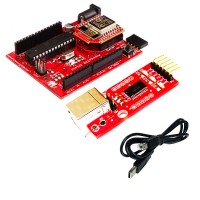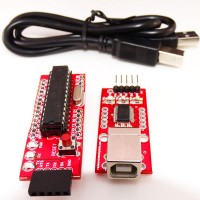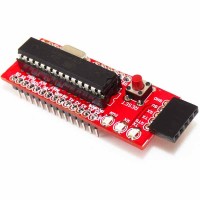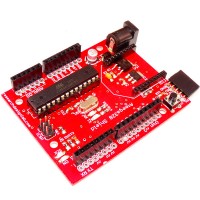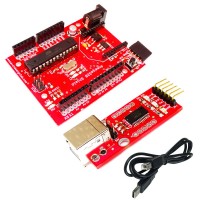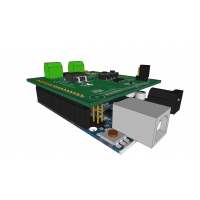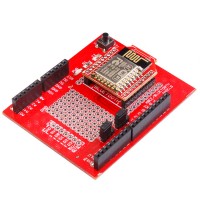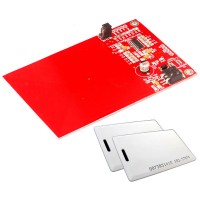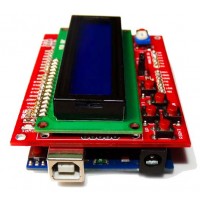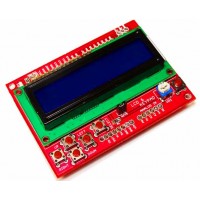UNO Compatible Shields
-
Atmega 328 is one of the most commonly used Micro controllers with open source platform amongst many hobbyist and industrial communities. The simplicity and the low power of Atmega 328 helps design many prototype boards which could be used in numerous applications.
ORDER CODE: RDL658
Learn More -
Atmega 328 is one of the most commonly used Micro controllers with open source platform amongst many hobbyist and industrial communities. The simplicity and the low power of Atmega 328 helps design many prototype boards which could be used in numerous applications.
ORDER CODE: RDL/DUF/14/001/V1.0
Learn More -
Atmega 328 is one of the most commonly used Micro controllers with open source platform amongst many hobbyist and industrial communities. The simplicity and the low power of Atmega 328 helps design many prototype boards which could be used in numerous applications.
ORDER CODE: RDL/A38/14/001/V1.0
Learn More -
Atmega 328 is one of the most commonly used Micro controllers with open source platform amongst many hobbyist and industrial communities. The simplicity and the low power of Atmega 328 helps design many prototype boards which could be used in numerous applications.
Order Code : RDL/RR3/14/001/V1.0
Learn More -
Atmega 328 is one of the most commonly used Micro controllers with open source platform amongst many hobbyist and industrial communities. The simplicity and the low power of Atmega 328 helps design many prototype boards which could be used in numerous applications.
Order Code : RDL/RUF/14/001/V1.0
Learn More -
Arduino Li-Fi Shield is a plug-and-play evaluation board for developing a wide array of visible light communication applications in consumer, wearable, industrial, medical and Internet of Things (IoT). Arduino Li-Fi Shield transfers data from one source to another through visible light without the flickering effect. Technically, 1‟s (LED on) and 0‟s (LED off) are modulated and then transmitted at very high speed.
ORDER CODE: RDL657
Learn More -
Arduino WiFi Adapter Development Board allows an Arduino board to communicate wirelessly using WiFi or BlueTooth.This shield is build up by two parts: Bluetooth and WiFi shield.This Bluetooth shield is a serial port Bluetooth module (Slave/Master) breakout board. you can directly stack on Arduino and use the UART port for Bluetooth communication.WiFi Shield is an enhanced WiFi modules breakout board for Arduino, it can directly plug in with Arduino, and use any pin of the basic board to connect with the WiFi module serial port.
ORDER CODE: RDL661
Learn More -
This is a low frequency (125Khz) RFID Reader With serial Output with range 0-10cms. The RFID Reader is designed specifically for low-frequency (125 kHz) passive tags.Frequency refers to the size of the radio waves used to communicate between the RFID system components.
Order Code :RDL/RFS/15/001/V1.0
Learn More -
One of the basic interfacing requirements for the hobbyists or electronics enthusiasts is I/P (keypad) and O/P (LCD display) for proyotype applications. This shield uses minimum number I/O’s that is 2 bits(D0 and D1) for LCD data . 5 input key switches (Navigation keys), when it's activated serial data will be sent to pin D0 by internal 2 line LCD controller. Each key has been pulled up to a different voltage level, so a different voltage will be generated every time a user selects a key. This voltage could be read by the analog pin of internal 2 line LCD controller on the board. Hence saves the no of I/O pins. The backlight of the LCD could be controlled by setting PWM (Pin D10) by adding a few lines of code.
Order Code : RDL/LKS/14/001/V1.0
Learn More -
One of the basic interfacing requirements for the hobbyists or electronics enthusiasts is I/P (keypad) and O/P (LCD display) for proyotype applications. This shield uses minimum number I/O’s that is 4 bits for LCD data and 2 control signal lines for the same. A single analog pin (Pin A0) is multiplexed to read 5 input key switches (Navigation keys). Each key has been pulled up to a different voltage level, so a different voltage will be generated every time a user selects a key. This voltage could be read by the analog pin A0 on the board. Hence saves the no of I/O pins. The backlight of the LCD could be controlled by setting PWM (Pin D10) by adding a few lines of code.
Order Code : RDL/RLSS/14/001/V1.0
Learn More


